23 Open-source No-code and Low-code Self-hosted Platforms for Citizen Developers
Are You Truly Ready to Put Your Mobile or Web App to the Test?
Don`t just assume your app works—ensure it`s flawless, secure, and user-friendly with expert testing. 🚀
Why Third-Party Testing is Essential for Your Application and Website?We are ready to test, evaluate and report your app, ERP system, or customer/ patients workflow
With a detailed report about all findings
Contact us nowTable of Content
Low-code and no-code are software development approaches that aim to simplify the process of building applications. These tools provide a visual interface and pre-built components, allowing users with limited programming knowledge, often referred to as citizen developers, to create software applications.
Citizen developers are individuals who are not traditional programmers but possess domain knowledge or expertise in a specific area. With low-code and no-code tools, citizen developers can leverage their expertise to build applications without having to write extensive code.
The benefits of low-code and no-code for citizen developers are numerous. These tools empower individuals to quickly turn their ideas into functioning applications, without the need for extensive coding knowledge. This democratizes the development process, allowing non-technical users to actively contribute to software creation.
Furthermore, low-code and no-code platforms often provide a wide range of pre-built components and integrations, reducing the time and effort required for development. Citizen developers can easily drag and drop these components to create workflows and functionality, saving significant development time.
Additionally, low-code and no-code tools promote collaboration between citizen developers and professional developers. These platforms allow them to work together on application development, bringing together the expertise of both technical and non-technical individuals.
In summary, low-code and no-code tools enable citizen developers to participate in the software development process by providing intuitive visual interfaces and pre-built components. They offer numerous benefits, including faster application development, increased collaboration, and the democratization of software creation.
Here, you will find the best open-source self-hosted Low- and No-code platforms for citizen developer teams, and indviduals.
1- ToolJet
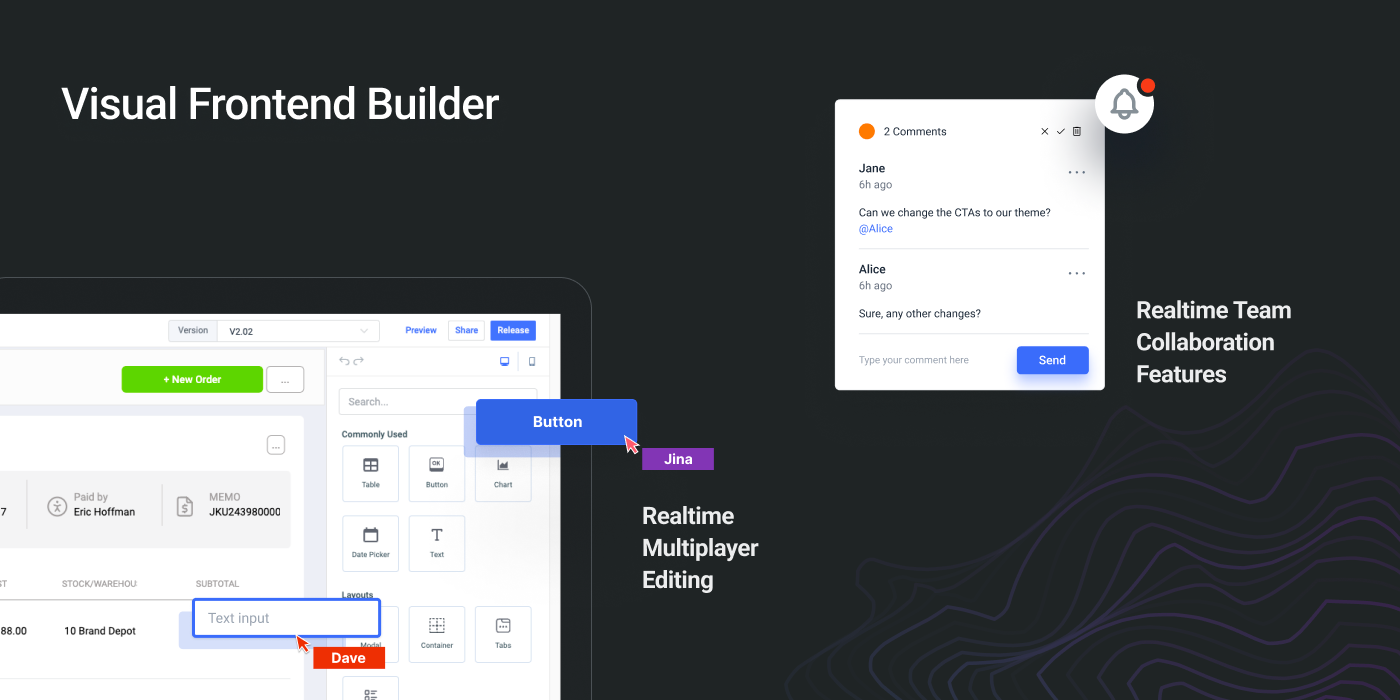
ToolJet is an open-source low-code platform that allows users to build web applications without writing code. It provides a visual interface for designing and developing applications using pre-built components and templates.
With ToolJet, users can create custom workflows, forms, and dashboards, and connect to various data sources. It aims to simplify the application development process and empower users with limited coding experience to build powerful web applications.
2- NocoBase
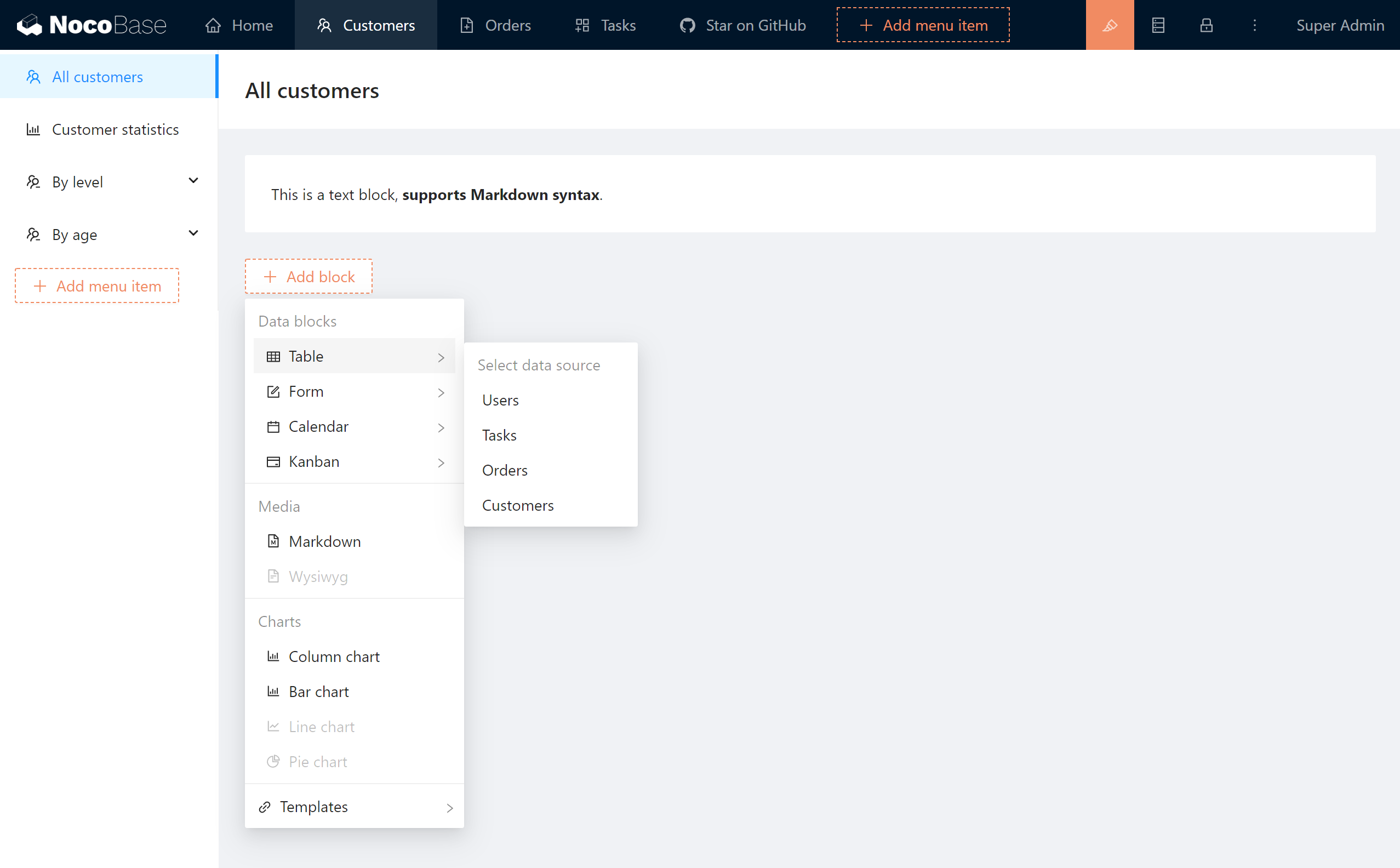
Nocobase is an open-source platform that allows users to rapidly build and deploy enterprise-grade applications. It provides a flexible data modeling system, powerful API capabilities, and a customizable user interface.
Nocobase's users can easily create and manage databases, define data models, and build complex applications that meet their specific needs. It is designed to streamline the development process and provide a robust foundation for building scalable and secure applications.
3- Appsmith
Appsmith is an open-source platform that enables users to build and deploy custom internal tools and applications. It offers a visual interface for creating user interfaces, connecting to data sources, and building workflows.
Appsmith allows users to build applications without writing code and provides a range of pre-built components and integrations. It is designed to simplify the process of building internal tools and empower users to create powerful applications quickly.
4- Orienteer
Orienteer is an open-source platform that provides a set of tools for building business applications. It offers features such as data visualization, analytics, and workflow automation.
Orienteer aims to simplify the development process and empower users to create robust and scalable business applications.
5- Retool ILLA
illa-builder is an open-source platform for building web applications. It provides a flexible and customizable framework for designing and developing applications. With illa-builder, users can create dynamic user interfaces, connect to various data sources, and build complex workflows. It aims to simplify the application development process and empower users to create powerful and intuitive web applications.
6- CoCreateJS
CoCreateJS is an open-source framework for building real-time collaborative web applications. It provides a set of tools and libraries that enable users to create interactive and collaborative experiences on the web.
CoCreateJS enables users to build applications with real-time updates, live collaboration, and synchronized data across multiple devices. It aims to simplify the process of building collaborative web applications and empower users to create engaging and interactive experiences.
7- CrossUI
CrossUI is an open-source platform for building cross-platform applications. It provides a visual interface for designing and developing applications that can run on multiple platforms, including web, desktop, and mobile. With CrossUI, users can create user interfaces, connect to data sources, and build complex workflows without writing code.
It aims to simplify the process of building cross-platform applications and empower users to create versatile and powerful applications.
8- Basetool
BaseTool is an open-source platform that offers a range of tools and features for building web applications. It provides a visual interface for designing user interfaces, connecting to data sources, and building workflows.
BaseTool's users can create custom applications without writing code and leverage pre-built components and templates. It aims to simplify the application development process and empower users to build powerful web applications efficiently.
9- Streamsync
StreamSync is an open-source platform that enables real-time collaboration and synchronization of data across multiple devices. It provides a set of tools and features for building collaborative web applications and interactive experiences. Some of its key features include:
- Real-time updates: StreamSync allows users to see changes made by others in real-time, providing a seamless collaborative experience.
- Live collaboration: Users can work together on the same document or project simultaneously, making it easy to collaborate and communicate effectively.
- Synchronized data: StreamSync ensures that data is synchronized across multiple devices, allowing users to access and interact with the latest information from anywhere.
- Version control: The platform offers version control capabilities, allowing users to track changes, revert to previous versions, and collaborate on different branches of a project.
- Customizable user interface: StreamSync provides a customizable user interface, allowing developers to tailor the platform to meet their specific needs and branding requirements.
StreamSync is designed to simplify the development process of collaborative web applications and empower users to create engaging and interactive experiences with real-time collaboration capabilities.
10- Appsemble
Appsemble is an open-source platform for building web applications. It provides a visual interface for designing and developing applications, allowing users to create custom workflows, forms, and dashboards. Some of its key features include:
- Drag-and-drop interface: Appsemble offers a user-friendly interface where users can easily drag and drop components to build their applications.
- Customizable templates: Users can choose from a variety of pre-built templates and customize them to suit their specific needs.
- Data integration: Appsemble allows users to connect to various data sources and integrate data into their applications.
- Collaboration tools: The platform provides collaboration features, enabling users to work together on the same project and share information.
- Responsive design: Appsemble applications are designed to be responsive and compatible with different devices and screen sizes.
- Extensibility: Users can extend the functionality of their applications by adding custom components and plugins.
Appsemble aims to simplify the application development process and empower users to build powerful web applications without extensive coding knowledge.

11- Hydra
Hydra is an open-source platform that provides a cloud-based integrated development environment (IDE) for building and deploying web applications. It offers a range of tools and features to streamline the development process and enable collaborative coding.
Hydra allows users to create and manage their projects in a centralized location, making it easy to collaborate with team members and track changes. The cloud-based IDE enables users to write code in various programming languages, including HTML, CSS, JavaScript, and more.
With Hydra, users can write code, test applications, and deploy projects in a cloud-based environment. The platform aims to simplify the development workflow by providing a comprehensive set of tools and capabilities.
The platform also offers features such as syntax highlighting, code completion, and debugging tools, which help developers write clean and error-free code.
Hydra provides a seamless integration with version control systems like Git, allowing users to easily manage their codebase and track changes.
12- GrapesJS
GrapesJS is an open-source web page builder framework that allows users to create and design web pages visually, without the need for coding. It provides a drag-and-drop interface and a wide range of pre-built components and templates, making it easy for users to build professional-looking web pages.
The framework is highly flexible and extensible, allowing developers to create custom components, plugins, and themes to enhance the functionality and appearance of the web pages. It supports responsive design, enabling users to create web pages that adapt to different screen sizes and devices.
GrapesJS is designed to simplify the process of building web pages and empower users with limited coding experience to create visually appealing and functional websites.
With GrapesJS, users can customize the layout, style, and content of their web pages using a visual editor. They can add and arrange elements, such as text, images, buttons, and more, simply by dragging and dropping them onto the canvas. GrapesJS also offers a code editor option for users who prefer to work with HTML and CSS directly.
13- formily
Formily is an open-source platform developed by Alibaba that provides a set of tools and libraries for building complex and dynamic forms in web applications. It offers a comprehensive solution for managing form data, validation, and user interactions.
Formily also offers advanced features, including form validation, dynamic form rendering, conditional logic, and dependency management. It aims to simplify the process of building and managing forms in web applications, providing a robust and efficient solution for developers.
With Formily, developers can create forms with a wide range of input fields, such as text fields, checkboxes, radio buttons, dropdowns, and more. The platform provides a flexible and extensible form model, allowing developers to define form schemas and handle form data with ease.
14- Builder.io/Mitosis
Builder.io is an open-source library that enables users to build dynamic and interactive web pages using a familiar component-based approach. It allows developers to create reusable UI components using HTML, CSS, and JavaScript and easily compose them together to build complex web pages.
With Builder.io, developers can design and develop web pages visually by dragging and dropping components onto the canvas. The library provides a wide range of pre-built components and templates, making it easy to create professional-looking web pages without writing extensive code.
mitosis is a key feature of Builder.io that allows developers to convert Builder.io components into framework-agnostic code. It enables developers to export their Builder.io components as fully functional React, Vue, or Angular components, making it easy to integrate Builder.io into existing projects built with these frameworks.
15- VvvebJs
VvvebJs is an open-source drag and drop website builder framework. It provides a visual interface for designing and building web pages using pre-built components and templates. With VvvebJs, users can create responsive and customizable web pages without writing code.
The framework offers a range of features, including drag and drop functionality, live preview, and the ability to export the generated HTML and CSS code. It aims to simplify the process of building websites and empower users with limited coding experience to create professional-looking web pages.
16- Rowy
Rowy is an open-source platform that provides a low-code framework for building business applications powered by Firebase. It aims to simplify the development process and empower users to create powerful and scalable applications without extensive coding knowledge.
Rowy leverages the capabilities of Firebase, including Firestore, Authentication, and Storage, to provide a robust backend infrastructure for data management, user authentication, and file storage. It offers a visual interface for designing data models, defining business logic, and configuring user access controls.
Rowy is designed to be highly extensible and customizable, enabling users to add custom functionality and integrate with third-party services. It provides a range of UI components and templates to accelerate the development process.
17- Silex
Silex, is a free and open source website builder in the cloud. Create websites directly in the browser without writing code. And it is suitable for professional designers to produce great websites without constraints. Silex is also known as the HTML5 editor.
18- Baserow
Baserow is an open source no-code database tool and Airtable alternative. Baserow is free open-source web-based database creation and management tools that requires no prior coding skills or advanced technical skills like other tools.

19- DoTenX core
DoTenX core, is a full stack low-code solution for building scalable and powerful applications, automations, APIs, internal tools and much more.
20- Crusher
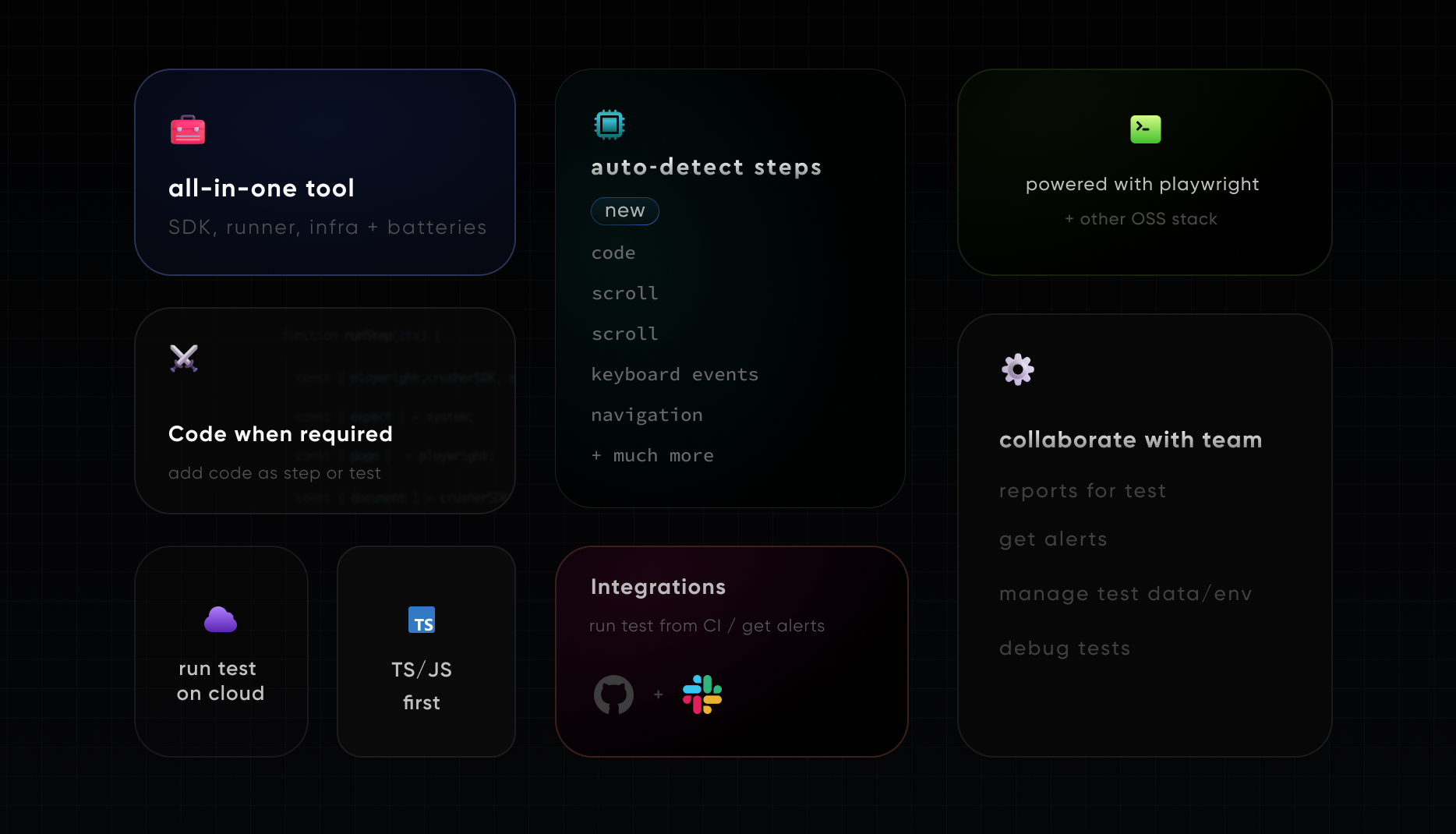
Crusher is a new fast testing framework, it's opinionated and takes a low-code first approach. Create tests by browsing your website and adding assertion when needed.
An alternative to slow workflows built and unreliable & slow libraries (w high learning curve), gluing tools, repetitive script.
Built from group up as an all-in-tool — with recorder, SDK, Infra + batteries built-in.
21- Streamsheet
The Streamsheet core is a powerful open-source tool that allows you to make your data immediately understandable and create interactive IoT applications visually, all without writing a single line of code.
Streamsheet, helps you to easily visualize and analyze your data, connect to various data sources, and build complex workflows. It provides a user-friendly interface for designing and managing your IoT applications, making it accessible to users with limited coding experience.
22- Motor Admin
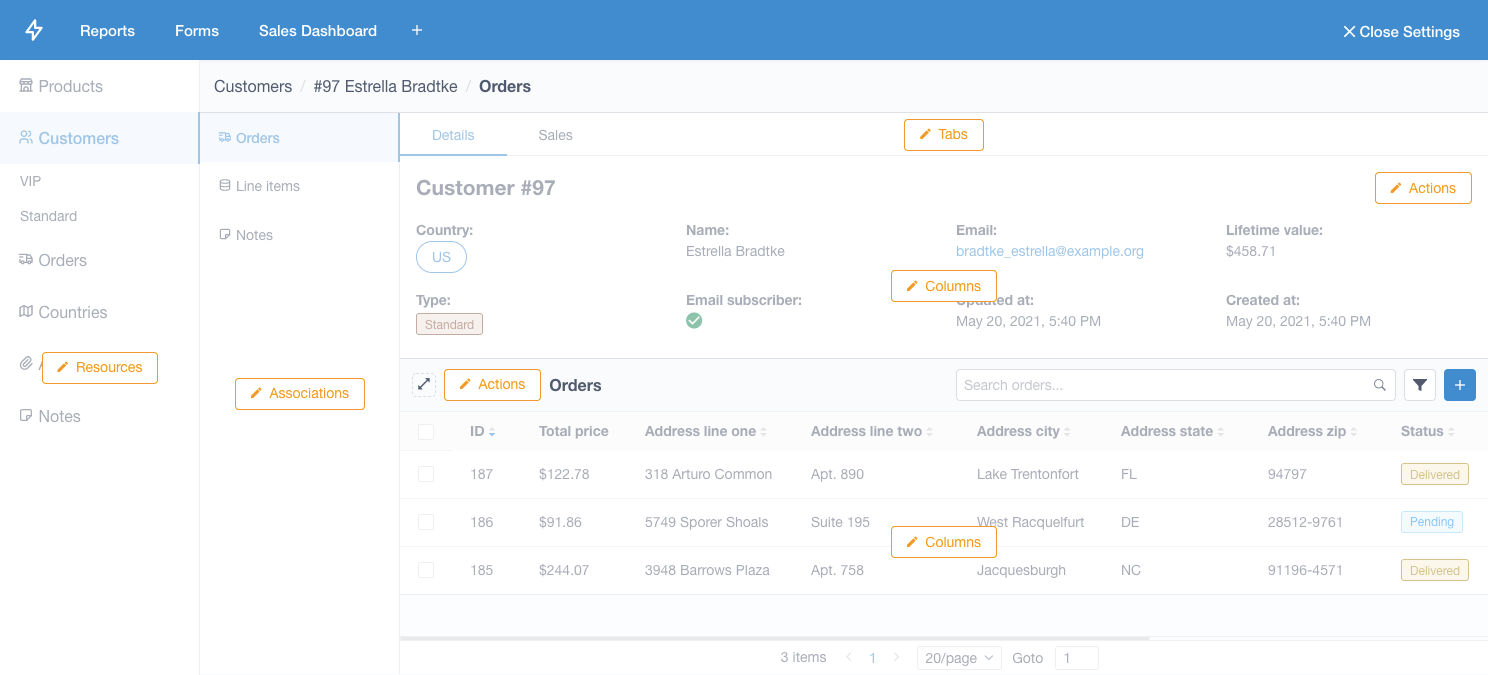
Motor Admin is an open-source no-code Admin pantel for bussiness intellegence. With it you can Search, create, update, and delete data entries using a convenient UI.
You can also create complex custom actions like sending an automated email to your customers via API integration. Build custom reports with SQL and visualize the results with charts. Combine individual reports into a single dashboard and share it with your team.
23- Vue Data Board Data Analysis Board
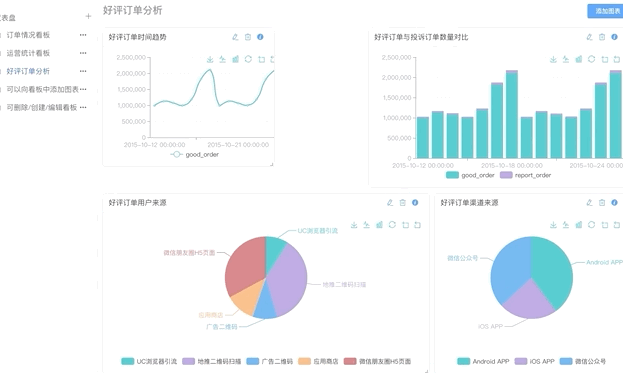
This is a self-hosted open-source low-code/ no-code data Analysis Board. It features rich reporting set, visual data presentation, diagrams, charts and report exports.
..













